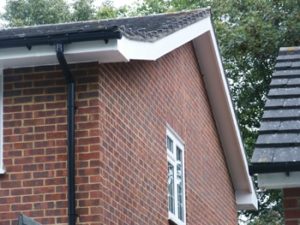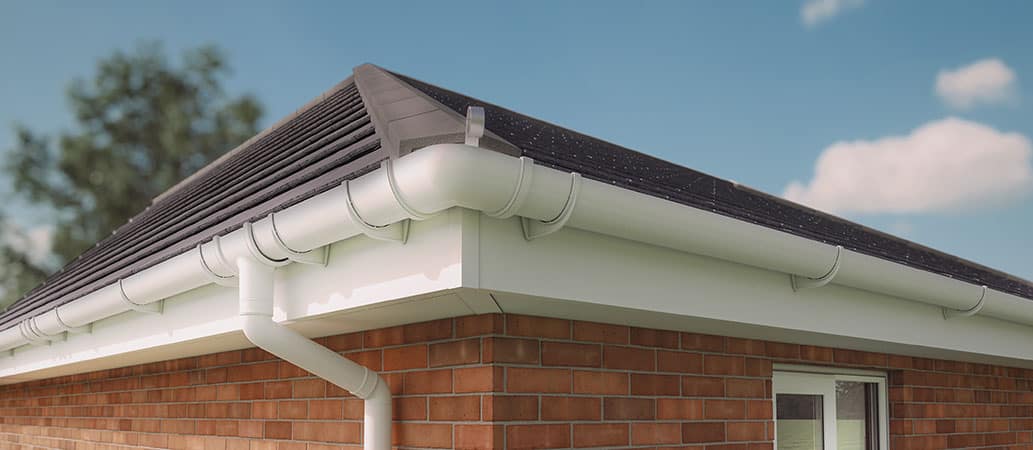What Is Fascia And Soffits Replacement Near Me? History Of Fascia And …
페이지 정보

본문
 Soffit and fascia replacement near me (Zenwriting.net)
Soffit and fascia replacement near me (Zenwriting.net)Soffits are crucial to the health of your home. They can help prevent rot, mold, and pests, and provide ventilation to your attic. They also give your roofline the appearance of a well-finished.
A soffit or a fascia that is damaged should be repaired immediately. Check for indications of discoloration or marks of gnawing.
Damaged or Deteriorated
Whether your home's fascia is constructed of aluminum, wood vinyl, or another material, its appearance and performance are important. They give a finished appearance to roof overhangs. They also draw air and moisture out from the attic, and protect the wood trim below and the roof below from weather-related damage. However, over time they could be damaged or worn out and cause problems for your home's roof and.
Soffits that are damaged or degraded fascias can cause various issues, including the infiltration of water and the growth of mold. The damage may also weaken the structure of your roof and can affect the structural integrity of your home. Pests and rodents can access the attic, from where they may build nests or cause more damage.
Specialists in roofing, gutter specialists carpenters, and other professionals are able to repair fascia or soffit. When searching for a pro make sure to inquire about their experience and work experience. It is important to choose an expert who is licensed, experienced and trustworthy. This will ensure that the soffit, fascia and gutters are installed and repaired properly.
Fascias and soffits require homeowners work from a roof or ladder. The work can be difficult, and working from a ladder is very risky. Many homeowners don't have the tools or know-how to accomplish these tasks. Hiring a professional can help ensure the job is done right and that your fascia and soffit can stand up to the elements for a long time.
Cracks, gaps and discoloration are all signs that your fascia or repairing soffit and fascia boards needs to be fixed. You should check them regularly for these issues and also for rot or insect infestations. Examining your fascia and soffit is easy since it is often visible from ground level. You can also look for gnawmarks or droppings as well as nesting material which are signs of rodent and pest activity. Contact a professional immediately If you observe any of these problems.
 Infestations
InfestationsSoffits and the fascia shield your roofline from water damage. Soffits are on the roof's underside overhang. They function to help vent the attic and draw water away from the home and discourage pests. But, as with any other component of the roof, they're not immune to wear and tear or environmental issues. They're also susceptible to insect infestations, and if you spot any obvious signs of infestation, it's important to have your soffit and fascia repaired as soon as you can.
The primary role of fascias is to guard the edge of your roof from the elements and direct rainwater away from your eaves and foundation. It also supports gutter installations and acts as the anchor point for elements such as downspouts. Wood fascia can also be damaged by water in the event of cracks or gaps. A professional can seal the holes to prevent water seeping in.
Infestations of fascias and soffits may result from poor maintenance, but they can also be caused by rodents, animals, or exposure to weather. Raccoons, squirrels and birds will nest in these structures if they're damp or decaying. Infestations can also happen as an outcome of improper cleaning, like using pressure washers too close to the roof's edges.
It's time to contact an expert in case your fascia contractor has been infested by mold. Mould is toxic to human health and can cause respiratory and cardiovascular issues when it's not completely removed. A professional can safely eliminate and treat the mold so that it doesn't recur and cause further damage to your roofline and interior.
A water-stained fascia is another sign to plan an inspection. This issue is typically caused by an unvented roof that allows humid air to enter the attic. If cool air in the attic is unable to escape, it can settle in the eaves and cause mildew and moisture issues, or even a roof leak. A roofing professional with years of experience can to determine whether this is the case.
Asbestos
While soffits and fascia boards might appear to be just architectural elements that give your roof structure a clean and polished appearance These essential home components are more than just enhancing the aesthetics of your home. These important parts of your roofline are essential to keep your home dry and comfortable. They also help prevent serious mould and damp damage.
However, if your house's roofline is old, it could contain asbestos - a dangerous carcinogen that was found in many homes and building materials up until the late 1980s. If your soffit or fascia soffit and guttering boards are made of asbestos, it's vital to be tested by a professional before any work to the roofline is carried out. Asbestos can be dangerous if it is cut, ripped, or disturbed, and the tiny inhalable fibers are released into the air.
If you're concerned that the soffits or the fascia on your roof are made of asbestos, it may be a good idea to install a temporary scaffolding in order to ensure the safety of anyone working on your roof. It is a legal requirement to ensure that any tradespeople working on your roofline have the appropriate degree of safety-related knowledge and training.
Asbestos cement soffit boards are usually difficult to identify, as they're painted to match the rest of your property. However, if you detect signs of rust and wear on the surface, or you notice that the wood is rotting or sliding, it's likely your soffit is made of asbestos cement.
While PVC usually covers any hairline cracks or flaws, asbestos-laced soffits are far more hazardous, as one airborne fiber can cause serious illnesses such as mesothelioma, which is a rare form of cancer that affects the lung's lining and the chest cavity. This is why it's important to have asbestos-laced soffits and fascia checked and removed by a trained professional before you replace your roofline. This can be a complex task that requires a thorough testing and decontamination, so it's best left to experts. Asbestos can pose a serious health risk, even if it is in good shape. Therefore, it's important to have any damaged or old trim removed and checked.
Water Damage
The soffit, also known as fascia, is a barrier that directs rainwater away from the roofline to the foundation. It also assists in gutter installation and provides anchor points for elements such as downspouts. It protects against water damage by taking in moisture that could cause structural problems in a home. It also assists in controlling the humidity levels and keep the temperature of the building by sealing the attic and stopping air from venting.
The fascia could be damaged due to a variety of causes like rotting and mold. wood. These issues can be detected by looking for dark patches or discoloration on the soffit's surface or for a soft, crumbly texture. The problem will only get worse over time, so it is best to have them checked and repaired whenever you can.
Other indicators of a failing fascia include visible cracks or scratches. They can be repaired by a professional or may require replacing completely. Fascias and soffits that are damaged are also susceptible to pest infestations. Rodents, birds and squirrels are attracted to holes in the soffits or fascia of a home. Once inside, they may chew through insulation and wiring and leave excrement that poses health risks for the occupants.
The condition of the soffit and fascia will ultimately have a major impact on the structure and value of a house. If your fascia or soffit is susceptible to water damage, you might be prone to rotting, mildew and insect infestations, as with other serious problems.
Soffit and fascias are made from vinyl, wood or aluminum. The kind of material used will affect how long the boards will last and how much it will cost to repair or replace them. Wood fascia boards are typically the most cost-effective but require regular maintenance to ensure their appearance. Aluminum, vinyl, and composite soffits are more durable and less susceptible to weathering than wood. However, these options may be more expensive than the traditional wood soffits.
- 이전글15 Best Hobs And Ovens Bloggers You Should Follow 24.12.31
- 다음글10 Simple Steps To Start The Business You Want To Start Case Opening Battles Business 24.12.31
댓글목록
등록된 댓글이 없습니다.
